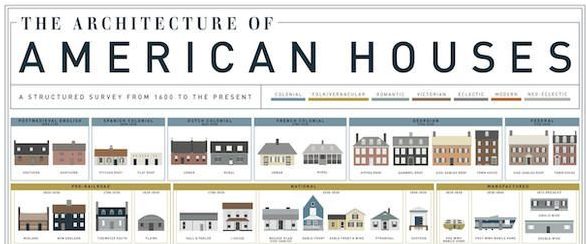Go into any architecture school in the country, and you’ll find students and teachers alike trying their hardest not to use the S-word – style. This is because the word ‘style’ has become a blurred signifier to mean a collection of ideas covering different periods of architecture. For example, Craftsman style is now regarded as anything resembling a bungalow with board and batten siding, deep roof overhangs, a front porch extending beneath the roof lines and any ill-placed design motif of Frank Lloyd Wright. While what is built nowadays shares only the loosest of roots with the original Arts and Crafts movement, the term Craftsman style nevertheless still flourishes.
It is this re-creation of yesterday’s design trends that make the college faculty blanch at the word style. Discussing, researching, and understanding architectural eras of the past is a necessary part of any architect’s education, but replicating architecture from days gone by is anathema to the training of an aspiring architect.
However, it is difficult to ignore the fact that we live in an era that will eventually fall into some yet to be named style. Drive down any street here in Denver, Colorado and you can find French chateaus, English estates, Mediterranean villas, American colonials, the occasional Chinese pagoda, and even more rarely the white, modern box.
The academics will say none of the above qualifies as a sign of the times. They will point to the pervasive green movement, the LEED initiatives and sustainability in general and say Eco-buildings are the new style. They are somewhat correct. But just as the pallid and short-lived era of post-modernism strived to replace international modernism by using the familiar tools of the past, the green era will ultimately prove to not be a so much a style but a new set of tools to build in the next direction.
We are therefore left with a Baskin and Robbins-type state of affairs. If you are considering building a new house or renovating an old one, you might be asked by your builder or your architect, “What style do you like?” If your heart is not set on Queen Anne, Federal or Rocky Road, you would do well to reply that how you and your family intend to use the house should dictate its ultimate form and not the other way around. Having to adapt your lifestyle into a form selected from a past period of history is burden which no architect should ask of you.
So in the end the discussion of style is ultimately irrelevant if you and your architect are designing a home built to suit your needs and living patterns. A home designed by an innovative architect will transcend style and serve your family in ways never imagined by Queen Anne.
If you click the below table, you can see what your house was once called.



You must be logged in to post a comment.